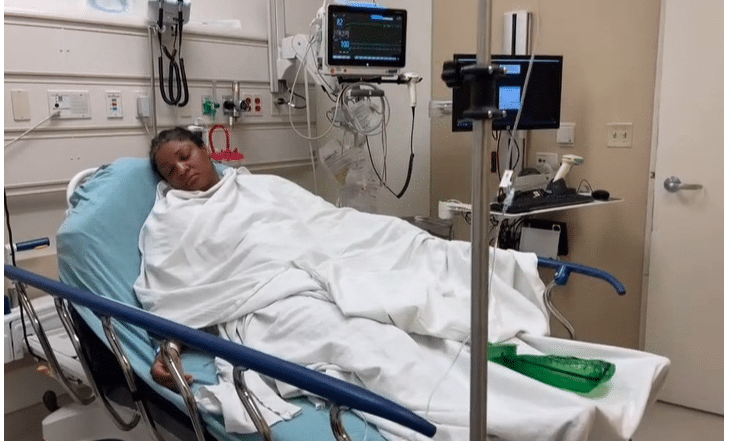Human papillomavirus (HPV) infections has been ranked as one of the most common viral agents of sexually transmitted infections worldwide.
According to Mayo Clinic, HPV infection is a viral infection that commonly causes skin or mucous membrane growths (warts).
Some types of HPV infection cause warts, and some can cause different types of cancer.
According to a publication by John Hopkins anyone who has ever had sex may be exposed to HPV.
The director of the Johns Hopkins Center for Cervical Dysplasia, Connie Trimble states that while more than 100 types of HPV exist, only about a dozen of them are associated with cervical disease.
The World Health Organisation (WHO) has warned that while condoms help prevent HPV, it does not offer total protection because they do not cover all the genital skin.
The organisation noted that while most HPV goes away on its own, Some HPV infections cause genital warts. Others can cause abnormal cells to develop, which go on to become cancer.
Currently, cervical cancer is the only HPV-caused cancer for which screening tests are available.
Cervical cancer is the most common type of cancer caused by HPV, other less common cancers affecting men and women, including anal, vulvar, vaginal, mouth/throat and penile cancers.
Speaking in an exclusive interview with Naija News, Dr Ese Oju shares more light on the HPV virus
How common is HPV?
“HPV does not cause problems in most people but sometimes it can cause genital warts or cancer. There are more than 100 types of HPV
“HPV is the most common sexually transmissible infection in the world. According to studies in the United States 90 percent of sexually active men and 80 percent of sexually active women get HPV.
“In a 2020 report it was discovered that Nigeria has a overall pool of HPV prevalence of 42 percent in the general population.”
Who is at risk?
“Both men and women are at risk of HPV. Men and women have similar prevalence rate globally. However, people who are at a higher risk of HPV are those who become sexually active at a young age. Those who become sexually active before age 18 are more likely to get HPV.
“People with multiple sexual partners, people with weakened immune system. People who have had sexual abuse, transgender people, gay, bisexual men and sex workers are at higher risk of developing HPV”
What are the different type of HPV and which is considered high risk?
“Long lasting infections with high risk HPV can cause cancers in part of the body where HPV infect cells.
“There are more than 200 types of HPV which can be categorised as high risk or low risk. The types that are considered high risk can cause several types of cancer including cervical cancer. Anal, penile, throat, vaginal, and vulva cancer. The high risks types are 16, 18, 31, 33, 35, 39, 45, 51, 52, 56, 58,59, 66, 68 and 70.
“HPV 16 and 18 are responsible for the most HPV related cancers. While the lower risk rarely cause cancer but can cause warts on or around the genitals, anus, mouth or the throat. The low risk HPV types are 6, 11, 42, 43 and 44. Type 6 and 11 cause around 90 percent of genital warts”
Can HPV be transmitted through non sexual contact?
“HPV infections can be sexually transmitted or non-sexually transmitted. The route of HPV transmission is primary through skin to skin or skin to mucosal contact.
“The sexual transmission is the most documented but there have being studies suggesting non- sexual causes.
“Self inoculation is described in studies as a potential HPV transmission route as it was certified in female virgins and children with genital warts without a sexual history of genital abuse.
“Self inoculation is when one infect themselves. May be by putting hands in their mouth. HPV can also be contacted from Gynecologist equipment. It can also be spread from a pregnant woman to foetus.”
How does HPV affect men and women differently?
“Men are more likely to be infected with HPV than women .
“Infact one in three men worldwide are infected with genital HPV. Men are more likely to be infected with high risk type of HPV although, HPV has no symptoms it can cause growth papillomas that look like warts on the side of the throat or genital area. It can cause cancer including cervical cancer, vaginal cancer, vulva, penile, rectal, anal. However most infections get cleared without problem.
“There is a myth that HPV cause health issues in women and not men, but that’s not true. HPV can cause different kind of cancers in men including those that affect the tonsils, the base of the tongue, the anus and the penis. While penile and anal cancers are rare. Cancers in the throat are the most HPV cancers found in men.
“HPV in men may clear in the body more easily than women.
“Women in general often clear the virus in 2 years or less. The HPV types associated with cervical cancer usually do not cause health problems for a heterosexual man. HPV poses the high risk in women because high risk HPV can progress to cervical cancer if it is not treated.
“In one study the overall prevalence of HPV was 41.8 percent in men and 38.4 percent in women.”
What tests are available to detect HPV?
“There are two types of test available to detect HPV. There are the Pap Smear and the cervical screening test. The pap smear also known as the pap test is a procedure that looks for precancerous cell changes in the cervix. While the cervical screening test looks for the presence of HPV.
“This cervical screening test is more effective than the pap smear and can detect the risk of developing cervical cancer. This means that women don’t need to have cervical screenings as frequently as pap smears.”
How often should women get pap smears and cervical screening?
“The frequency of the pap test and HPV test depend on age and also if there has been an hysterectomy.
“Women age 21-29 years should get a pap test every three years. Women age 30-65 years old should get a pap test every three years or get an HPV test every five years or they can get a pap test and a HPV test together every five years. The pap test and the HPV test together are known as cold testing. Women older than 65 years old should ask their doctor if they can stop having pap and HPV test. And after a hysterectomy you may be able to stop getting pap smears but you should continue having routine pelvic exams.”
What vaccines are available for HPV
“There are types of vaccines available to protect against HPV namely gardasil, gardasil 9 and cevarix.”
Can HPV be cured?
“HPV cannot be cured. Genital warts can be treated but they can’t be cured. You can remove the warts but you will still have the HPV that causes them. The HPV may go away at some point on its own but there is no way to know for sure. Some people will get warts again and others wouldn’t.”

 1 month ago
6
1 month ago
6















 English (US) ·
English (US) ·